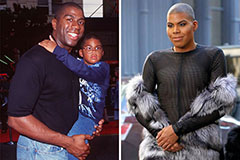Empowering Freedom With Assistive Technology for the Blind
The assimilation of assistive technology for individuals that are visually impaired or blind stands for a significant advancement in promoting independence and enhancing high quality of life. With a variety of tools-- from display viewers to cutting-edge tactile tools-- these modern technologies not only promote navigating and communication however also advertise social addition and involvement in various facets of life.
Comprehending Assistive Modern Technology
Although assistive innovation has actually developed considerably for many years, its fundamental function stays the same: to improve the high quality of life for individuals with specials needs, particularly those who are blind or aesthetically impaired. This modern technology encompasses a wide variety of devices and gadgets that facilitate freedom and functionality in day-to-day activities.
Assistive innovation can be classified right into state-of-the-art and low-tech remedies, each designed to meet specific needs. High-tech devices frequently consist of software application applications, specialized equipment, and flexible tools that make use of sophisticated modern technology to supply support in numerous contexts. Conversely, low-tech services might entail everyday products that are customized to improve access, such as magnifiers or tactile markers.
The assimilation of assistive technology into the lives of people that are blind or aesthetically impaired not just advertises autonomy but additionally cultivates social inclusion and participation in specialist and instructional settings. By leveraging these technologies, individuals can navigate their surroundings, gain access to info, and interact efficiently, therefore enhancing their general lifestyle. Recognizing assistive technology is critical for caregivers, professionals, and supporters that intend to sustain individuals in optimizing their prospective and accomplishing higher independence.
Types of Assistive Devices
Assistive gadgets for the blind and visually damaged are crucial tools that enhance daily obeying dealing with specific difficulties come across by customers. These gadgets can be broadly categorized right into 3 major kinds: optical gadgets, electronic devices, and sensory devices.

Sensory devices, such as Braille screens and responsive maps, give alternative means to get info. Braille presents transform electronic text into Braille, allowing individuals to review touch. Responsive maps provide spatial understanding through elevated textures and lines, enabling better ecological understanding.
Together, these assistive tools equip individuals with aesthetic disabilities to involve even more completely with their environments, promoting higher freedom and confidence in everyday activities.

Impact on Every Day Life
The assimilation of assistive technology right into the every day lives of people who are aesthetically impaired or blind dramatically enhances their capacity to connect and browse with the world around them. Instruments such as screen readers, Braille displays, and mobile applications promote accessibility to information, allowing individuals to involve with digital web content, interact efficiently, and manage everyday jobs independently.
Moreover, modern technologies like clever glasses and navigation applications supply real-time support in unknown atmospheres, improving mobility and self-confidence. These tools enable customers to recognize obstacles, read indications, and even acknowledge faces, thus fostering a sense of freedom in public spaces. In addition, home automation systems, which can be managed with voice commands, permit people to manage their living atmospheres better, improving convenience and security.
The impact of assistive technology prolongs past functional jobs; it promotes social incorporation and psychological wellness. By connecting the void in between people and their environments, these modern technologies encourage users to get involved completely in neighborhood tasks, seek instructional possibilities, and participate in purposeful partnerships. Ultimately, the development of assistive technology contributes in redefining the possibilities for individuals who are visually damaged or blind, bring about a much more accessible and comprehensive society.
Success Stories and Testimonies

One more effective testimonial originates from Mark, a current university graduate who used screen analysis software program throughout his scholastic eye doctor near me trip. This modern technology enabled him to accessibility training course products and get involved in discussions, ultimately causing his successful transition right into the workforce. Mark credit histories assistive innovation for equipping him to attain his profession objectives, highlighting its role in leveling the having fun field for people with aesthetic problems.
Furthermore, recreation center have reported increased involvement in their programs thanks to the introduction of obtainable electronic platforms. These platforms have actually made it much easier for people to attach, share resources, and support one another. These success stories collectively emphasize the profound impact of assistive modern technology in promoting self-reliance, improving lifestyle, and damaging down barriers for the blind and aesthetically damaged neighborhood.
Future Trends in Assistive Technology
Emerging innovations are positioned to reinvent the landscape of assistive technology for people who are aesthetically impaired or blind. Developments in man-made knowledge (AI) and device understanding are boosting the abilities of tools, making it possible for even more user-friendly individual experiences. For example, AI-driven applications are progressively able to identify items and review message aloud in real-time, providing users with important information concerning their surroundings.
In addition, improvements in wearable next page modern technology are creating new possibilities for self-reliance. Smart glasses equipped with increased fact functions can overlay crucial info onto the user's area of vision, promoting navigating and interaction with the setting. Additionally, the combination of Web of Things (IoT) devices is streamlining ease of access in smart homes, allowing individuals to regulate devices and get alerts with voice commands or tactile interfaces.
The advancement of braille display screens and responsive responses systems is additionally increasing, advertising access to digital web content and boosting interaction. As these technologies remain to develop, they promise to improve daily living, instructional possibilities, and employment prospects for people with aesthetic disabilities. Continual collaboration between engineers, customers, and advocacy teams will certainly be important in ensuring these advancements meet the needs of the community effectively.
Final Thought
To conclude, assistive technology plays a critical function in enhancing the self-reliance of people that are aesthetically damaged or blind. By supplying necessary tools and resources, these innovations assist in improved communication, access, and navigation to details, consequently fostering freedom and positive self-image. The transformative influence of assistive gadgets not just advertises reliable interaction with the environment but additionally encourages social incorporation and participation in numerous elements of life, inevitably equipping customers to grow within their areas.
The integration of assistive innovation for people who are aesthetically damaged or blind stands for a considerable innovation in cultivating independence and enhancing high quality of life.The assimilation of assistive innovation right into the lives of individuals that are blind or aesthetically impaired not only advertises freedom yet likewise cultivates social inclusion and participation in expert and educational atmospheres. Ultimately, the advancement of assistive technology is instrumental eye check up in redefining the opportunities for people that are visually damaged or blind, leading to a more obtainable and comprehensive society.
Several individuals that are visually damaged or blind have actually shared inspiring success stories that highlight the transformative impact of assistive technology on their lives.In final thought, assistive technology plays a pivotal role in boosting the freedom of people that are blind or visually damaged.
 Alicia Silverstone Then & Now!
Alicia Silverstone Then & Now! Andrew Keegan Then & Now!
Andrew Keegan Then & Now! Earvin Johnson III Then & Now!
Earvin Johnson III Then & Now! Batista Then & Now!
Batista Then & Now! Justine Bateman Then & Now!
Justine Bateman Then & Now!